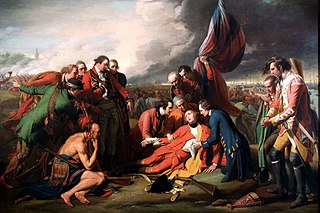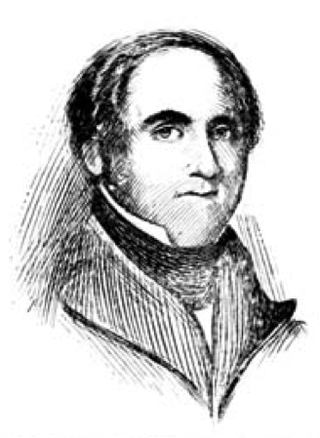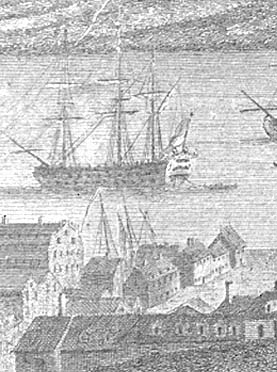
Events from the year 1768 in Canada.

Province House in Halifax is where the Nova Scotia legislative assembly, known officially as the Nova Scotia House of Assembly, has met every year since 1819, making it the longest serving legislative building in Canada. The building is Canada's oldest house of government. Standing three storeys tall, the structure is considered one of the finest examples of Palladian architecture in North America.

Halifax Chebucto is a provincial electoral district in Nova Scotia, Canada, that elects one member of the Nova Scotia House of Assembly.

St. Paul's Church is a historically evangelical Anglican church in downtown Halifax, Nova Scotia, within the Diocese of Nova Scotia and Prince Edward Island of the Anglican Church of Canada. It is located at the south end of the Grand Parade, an open square in downtown Halifax with Halifax City Hall at the northern end.

Beaver Bank is a suburban community northeast of Lower Sackville on the Beaver Bank Road in Nova Scotia, Canada, within the Halifax Regional Municipality. It is about 35 kilometres from the City of Halifax.

Montague Gold Mines is a rural community in the Halifax Regional Municipality of Nova Scotia, located on the Montague Road off of exit 14 of Highway 107 three kilometers from Dartmouth.

Barrington Street is a major street in Halifax, Nova Scotia, Canada, running from the MacKay Bridge in the North End approximately 7 km south, through Downtown Halifax to Inglis Street in the South End. Its civic numbers range from 950 to 4756 on the Halifax Peninsula street grid numbering system.

Charles Morris army officer, served on the Nova Scotia Council, Chief Justice of the Nova Scotia Supreme Court (1776–1778) and, the surveyor general for over 32 years, he created some of the first British maps of Canada's maritime region and designed the layout of Halifax, Lunenburg, Lawrencetown, and Liverpool. In Halifax, he laid out both the present-day down town core and the Halifax Common.

Joseph Scott was a soldier, merchant, government office holder, and political figure in Nova Scotia. He was a member of the 2nd Nova Scotia House of Assembly from 1759 to 1760. He built the Scott Manor House.
Charles Morris was a surveyor, judge and political figure in Nova Scotia. He represented Kings County from 1761 to 1770 and Sunbury County from 1770 to 1784 in the Legislative Assembly of Nova Scotia.

The Halifax Club is a private club in Halifax, Nova Scotia that was established in 1862. The club serves as a meeting place for business-minded men and women. It is a place where they can "meet, toast the day's successes, dine or simply relax in a warm atmosphere of history and tradition." The Club has a substantial art collection including a self-portrait of Benjamin West and a painting by Robert Field. The Club was built by George Lang.

The Great Pontack was a large three-story building, erected by the Hon. John Butler, previous to 1754, at the corner of Duke and Water Streets in Halifax, Nova Scotia. It was named after the famous Pontack Club in London. The first resident professional company in Canada was The American Company of Comedians, believed to have performed at The Great Pontack, Halifax, in the summer and fall of 1768.

Formally known as "His Majesty's Council of Nova Scotia", the Nova Scotia Council (1720–1838) was the original British administrative, legislative and judicial body in Nova Scotia. The Nova Scotia Council was also known as the Annapolis Council and the Halifax Council. After 1749, when the judicial courts were established, the Nova Scotia Council was limited to administrative and legislative powers.

Fort Ellis was a British fort or blockhouse built during the French and Indian War, located at the junction of the Shubenacadie and Stewiacke Rivers, close to Stewiacke, Nova Scotia, Canada. The location was labelled Ville Pierre Hebert by Charles Morris. The 14 Acadian families in the area vacated with the Acadian Exodus. Charles Morris recommended a Fort on the Shubenacadie River in 1753. Governor Lawrence first considered the fort in 1754 as a means to protect Halifax from Mi'kmaq raids. Lawrence decided the fort would not be effective until after the Battle of Fort Beauséjour. The fort was completed on October 18, 1761, shortly after the Halifax Treaties were signed. The fort was to guard the new road built to connect Truro and Halifax against Mi'kmaq raids. The fort was called Fort Ellis after Governor Henry Ellis, who was appointed governor weeks after the forts completion. The fort was never garrisoned and eventually abandoned in 1767. Fort Belcher, named after Governor Jonathan Belcher, was built on Salmon River in Lower Onslow, Nova Scotia (1761–67). Fort Franklin was built at Tatamagouche in 1768, named after Michael Francklin and lasted only a year. Fort Morris was named after Charles Morris.

Scott Manor House was built sometime between 1769 and 1772 and is now a museum in Bedford, Nova Scotia. It is the second oldest house in the Halifax Regional Municipality, after the Morris House, and was built by Joseph Scott on the land once owned by his brother Captain George Scott. The house was built next to Fort Sackville, which was under the command of Joseph Scott (1760).

The Heritage Trust of Nova Scotia is a non-profit society dedicated to the advocacy for and conservation of Nova Scotia's architectural and cultural heritage. It was founded in 1959, "in response to the proposed demolition of Enos Collins's Halifax House Gorsebrook," a Georgian-style home that once stood on the present site of Saint Mary's University hockey rink. The Trust has advocated for and assisted in the conservation of numerous heritage buildings and districts in Nova Scotia. Notable examples include The Carleton, Morris House, and Historic Properties.

The Halifax School for the Deaf was an institution in Halifax, Nova Scotia, Canada, which opened on 4 August 1856. It was the first school of the deaf in Atlantic Canada. There was later a dispute over who the true founder was, William Gray (1806-1881), a deaf Scottish immigrant who was the first teacher in the back room of a house in Argyle Street, or George Tait (1828-1904), another deaf Scot, who claimed to have been the driving force behind the establishment of the school. Gray was sacked in 1870 for being intoxicated and for threatening pupils with violence.

The Black-Binney House was a former residence built in 1819 in Halifax, Nova Scotia which is now a National Historic Site of Canada. The house was built by John Black (merchant) and is reflective of the Palladian-inspired residences common during the late 18th and early 19th centuries in Eastern Canada. In 1857, Hibbert Binney subdivided the property to build the St. Matthew's United Church (Halifax). In 1965 Sidney Culverwell Oland purchased and renovated the building to house the Nova Scotia Division of the Canadian Corps of Commissionaires.

Dr. James Boggs was surgeon who migrated from New York to Nova Scotia during the American Revolution.

A township in Nova Scotia, Canada, was an early form of land division and local administration during British colonial settlement in the 18th century. They were created as a means of populating the colony with people loyal to British rule. They were typically rural or wilderness areas of around 100,000 acres (400 km2) that would eventually include several villages or towns. Some townships, but not all, returned a member to the General Assembly of Nova Scotia; others were represented by the members from the county. Townships became obsolete by 1879 by which time towns and counties had become incorporated.





















